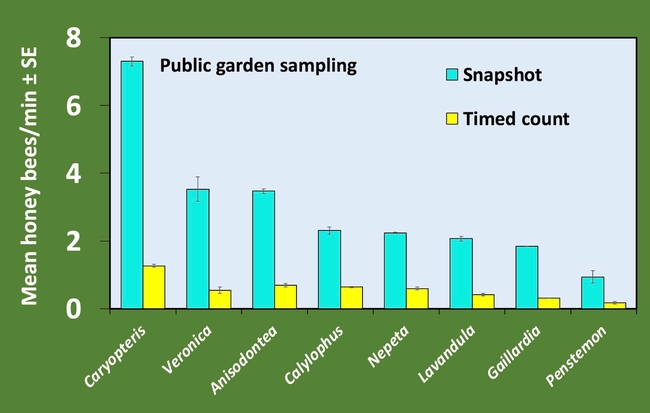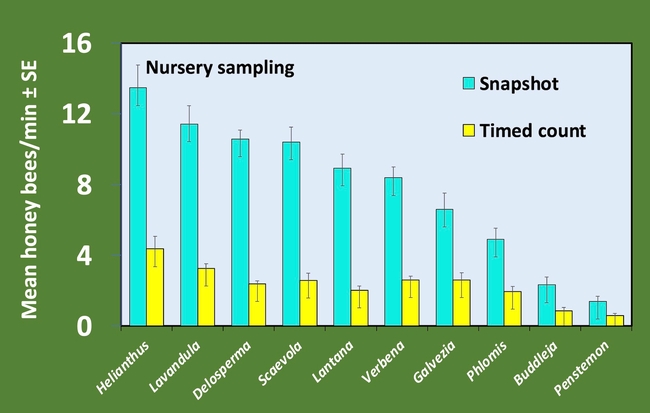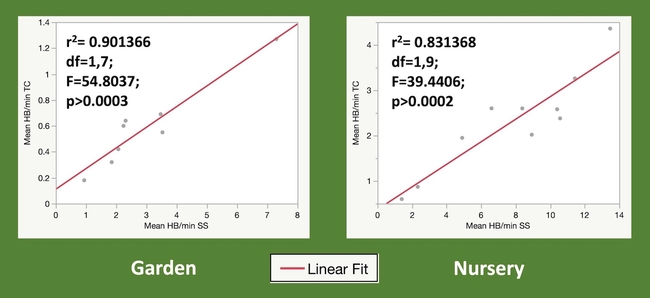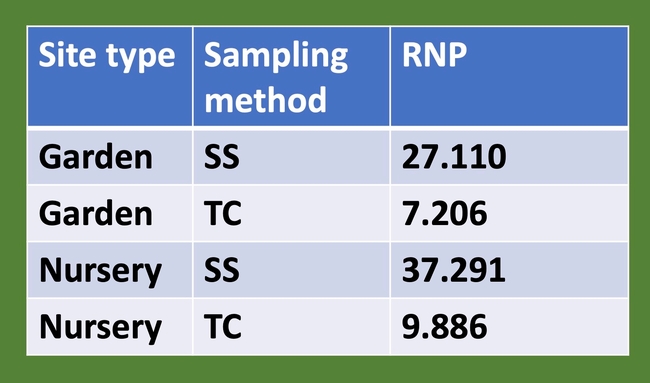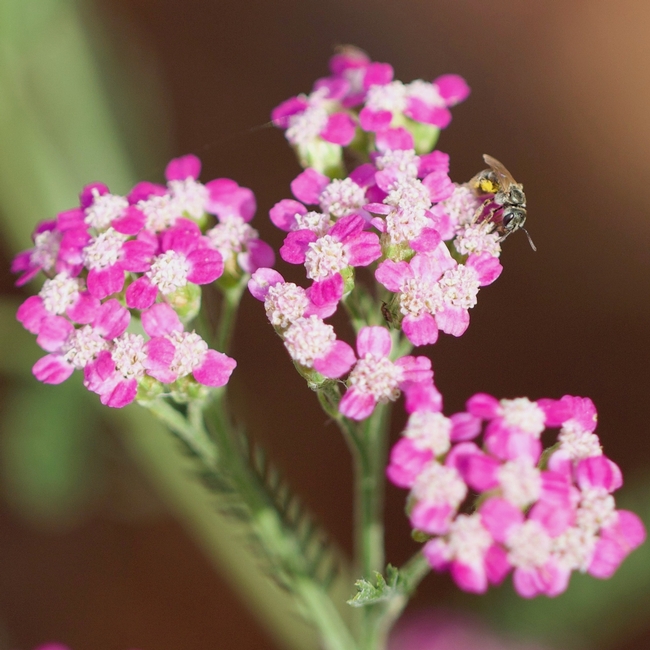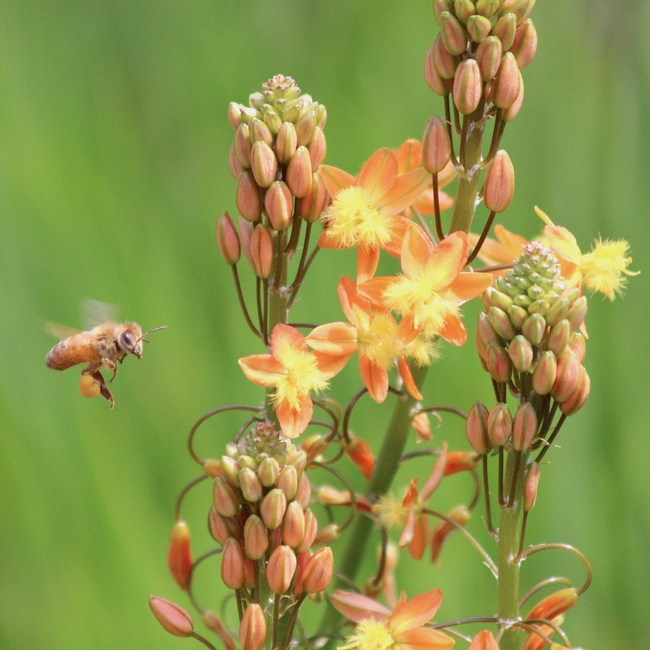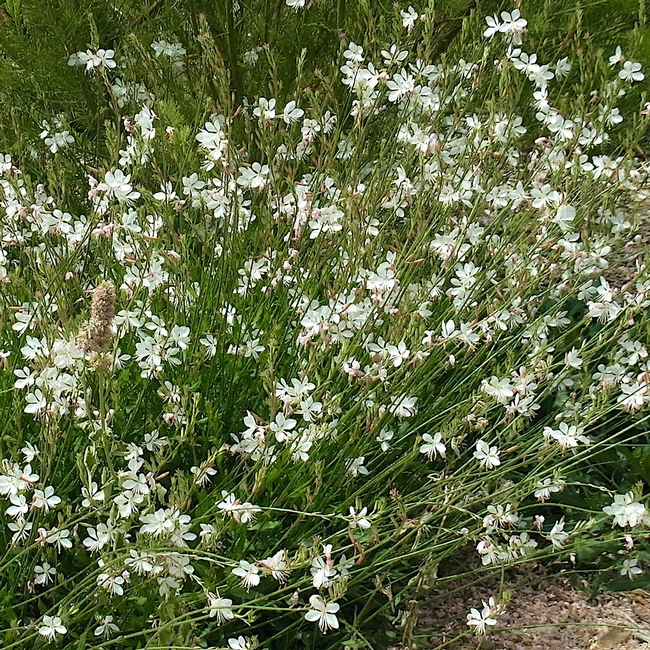- Author: Christine Casey
- Author: Lea Corkidi
Regular Haven visitors notice that we frequently change our planting. It's one of the joys of gardening -- there are always new plants to try and experiment with. At the Haven, research on new plants and methods for bee gardens is essential to our educational mission.
Previous posts have reported on our work with bee plant preferences, with an emphasis on low-water plants. Our colleagues at UC Cooperative Extension in Southern California have done similar work for that part of the state. Previous blog posts have covered research with mulch, plant color, and water; all are important components of a healthy bee garden.
But all this is for naught if it isn't put into practice. So our current work is to create tools for the California horticulture industry to educate employees and customers about bee garden best practices based on this research. The first step in this work is development of an efficient sampling method so growers, landscapers, and public gardens can easily assess the bee-attractiveness of new plants as they come on the market. This will allow these plants to be marketed correctly, and will also help growers to target bee-friendly pest management.
In our attractiveness studies the Southern CA team used timed counts, while the Northern CA team used a snapshot count method (1). This technique consists of 20 second quick counts of every plant that is repeated three times in succession rather than a single 3-minute timed count. The snapshot count is faster to complete and more readily worked into the day of an otherwise busy nursery employee.
The purpose of this study was to calculate the relative net precision (RNP) of each bee counting method at a wholesale nursery (Fallbrook, CA) and a public garden site (Encinitas, CA) in San Diego County. RNP is calculated as shown below and is a way to assess sampling efficiency by balancing precision and sampling cost (2).
RNP = [1/(cost x Rv)] x 100, where Rv = (SE/mean) x 100
Plants in full bloom were sampled weekly for at least 4 weeks using both methods. Bees were counted as honey bees or other bees as this distinction is easy for an untrained observer; only honey bee data is reported here. At both locations, we saw a larger absolute number of bees with the snapshot method, but the trend of most attractive to least attractive was the same for both methods (Figures 1 and 2). We are most interested in this trend rather than the absolute number, which is expected to vary between locations. Additionally, regression analysis shows that the two counting methods are strongly correlated (Figure 3).
Finally, we saw differences between the RNP values calculated for the two sampling methods, with higher RNP for the snapshot method at both locations (Table 1). Higher RNP means greater sampling efficiency (2).
A second year of study will begin in April at additional sites to confirm these findings. We look forward to providing the California green industry with a useful tool for supporting pollinator gardens.
References
1. Garbuzov and Ratnieks. 2014. Functional Ecology 28: 364-374.
2. Buntin pp 99-115 in Handbook of Sampling Methods for Arthropods in Agriculture. CRC Press, Boca Raton, FL. 1994.
- Author: Christine Casey
I don't know about you, but all the rain and cold weather we're experiencing in Northern California have left me especially eager for this year's gardening season to begin. And if learning more about bees and gardens is something you'd like to do this year, we've got a class for you! We're offering all classes as either remote or in-person. Both methods include videos to view at your leisure; there's additional hands-on instruction with the in-person classes.
All in-person classes take place at the Haven on the UC Davis campus. Class fees support the Haven and our programs.
2023 classes:
I Planted a Bee Garden: Now What?
April 1, 2023 9am to 10:30am
Instructor: Christine Casey, Ph.D., UC Davis Department of Entomology and Nematology
Many California gardeners are removing their water-hungry turf and replacing it with lower-water plants that provide food and habitat for bees and other animals. But if all you know about garden maintenance is how to start the lawnmower, deciding what to plant and learning how to maintain it can be daunting.
Aimed at beginning bee gardeners, this class will cover the basics of turf conversion and weed control along with plant selection for bees and other pollinators. We'll also cover maintenance of a turf yard compared to planted borders. The in-person class includes hands-on practice with gardening techniques and a tour of the Haven's plants.
Remote class registration ($25 fee): https://registration.ucdavis.edu/Item/Details/939
In-person class registration ($40 fee): https://registration.ucdavis.edu/Item/Details/940
Advanced Bee Gardening
April 22, 2023 9am to 10:30am
Instructor: Christine Casey, Ph.D., UC Davis Department of Entomology and Nematology
This class is for experienced gardeners who want to better support bees in their gardens. We'll discuss garden design and plant selection based on bee biology as well as how to encourage insect natural enemies to keep bee gardens pesticide-free. We'll also learn about some of the latest research on bees and gardens and how to incorporate this into your garden. The in-person class will conclude with a tour of the Haven for a hands-on look at plants and bees.
Remote class registration ($25 fee): https://registration.ucdavis.edu/Item/Details/941
In-person class registration ($40 fee): https://registration.ucdavis.edu/Item/Details/942
Collecting Bees Through Photos
April 1, 2023 11:30am to 1pm
Instructor: Christine Casey, Ph.D., UC Davis Department of Entomology and Nematology
Bees are fascinating animals, and many people are intrigued by the idea of having their own bee collection for closer observation. An effective way to ‘collect' bees without harm is by making a bee photo album. We'll start with an overview of bee anatomy and classification and learn how to distinguish bees from other insects. We'll then look at key features of common bees that can be used to identify them in flight. The class will finish outdoors for hands-on experience observing, identifying, and photographing bees.
Remote class registration ($25 fee): https://registration.ucdavis.edu/Item/Details/937
In-person class registration ($40 fee): https://registration.ucdavis.edu/Item/Details/938
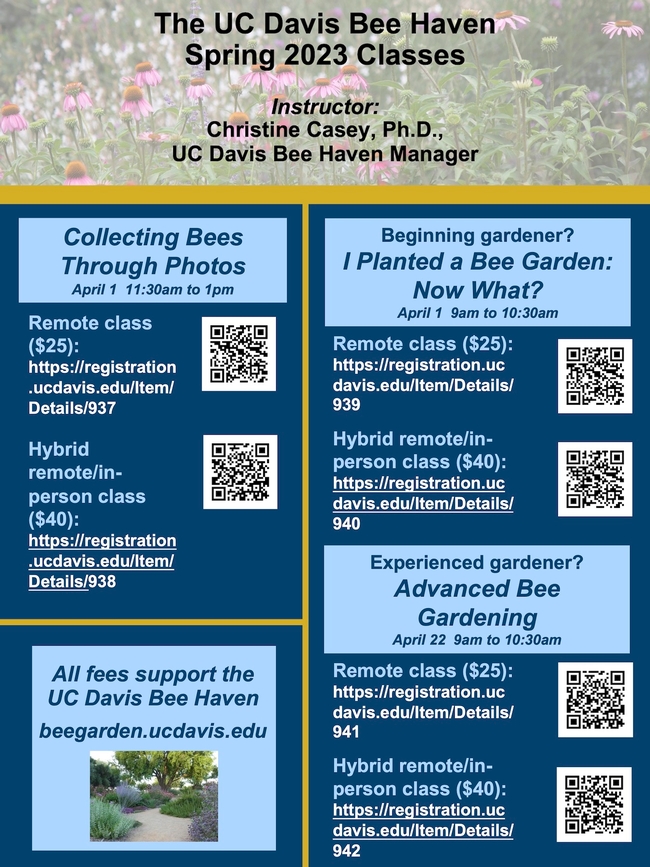
- Author: Christine Casey
As we move into the hottest, driest part of the summer, many of our gardens are looking a bit worn out. It's certainly easier to stay inside where it's cool and put garden tasks off until the fall.
But the bees are still out there doing their work to bring us food and create habitat for wildlife. What are the plant options for California gardens that will stand up to the heat with little water (all these plants are rated ‘low' in WUCOLS) and be loved by bees?
One great choice is our native California aster, Symphyotrichum chilense. Unlike asters native to the eastern US and Europe, which need regular water in California, this one thrives on low water. Shown here are the cultivars, 'Purple Haze' and 'Point St. George'.
'Purple Haze' is about 2 feet tall, while 'Point St. George' grows low to the ground. The former has deeper purple flowers than in typical for this species. Both need full sun to light shade and will spread (a lot!) to cover an area. Consider yourself warned when choosing an area to plant these in.
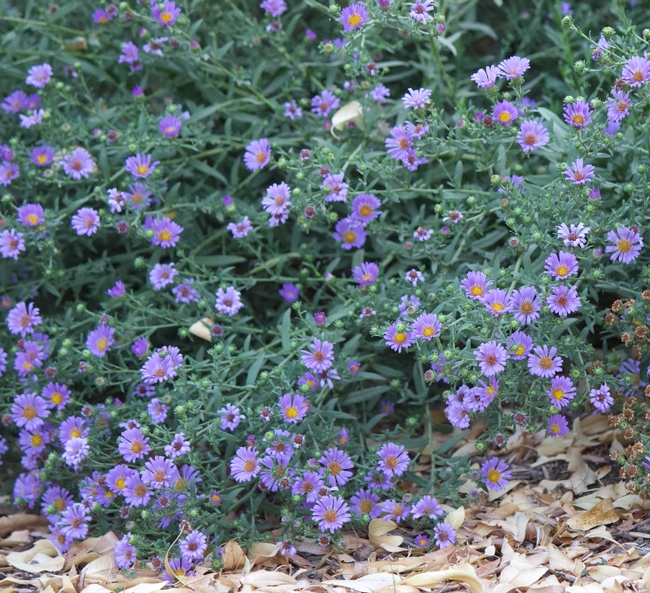
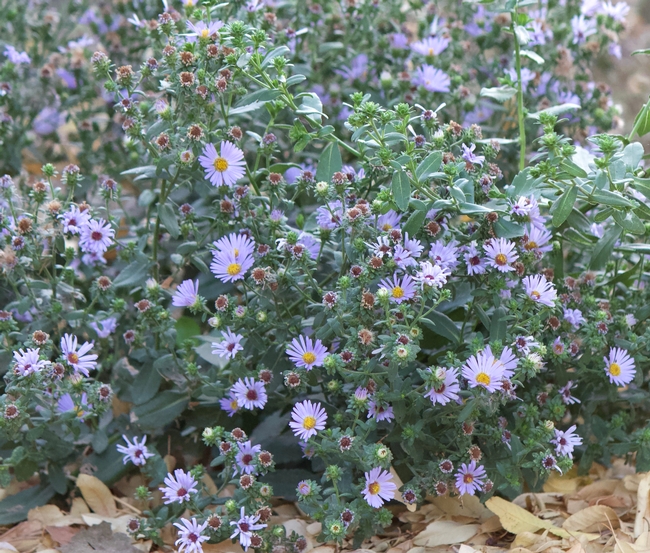
In our studies of bee plant preference at UC Davis we found our native aster to be one of the most attractive plants to California native bees. The late summer flowers are a critical source of nectar and pollen at a time when not a lot is blooming.
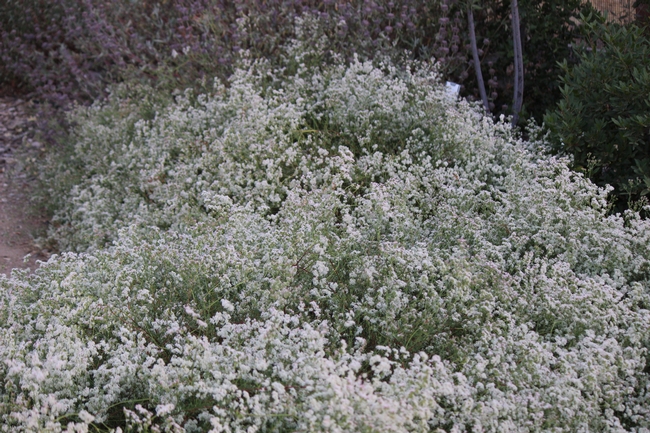
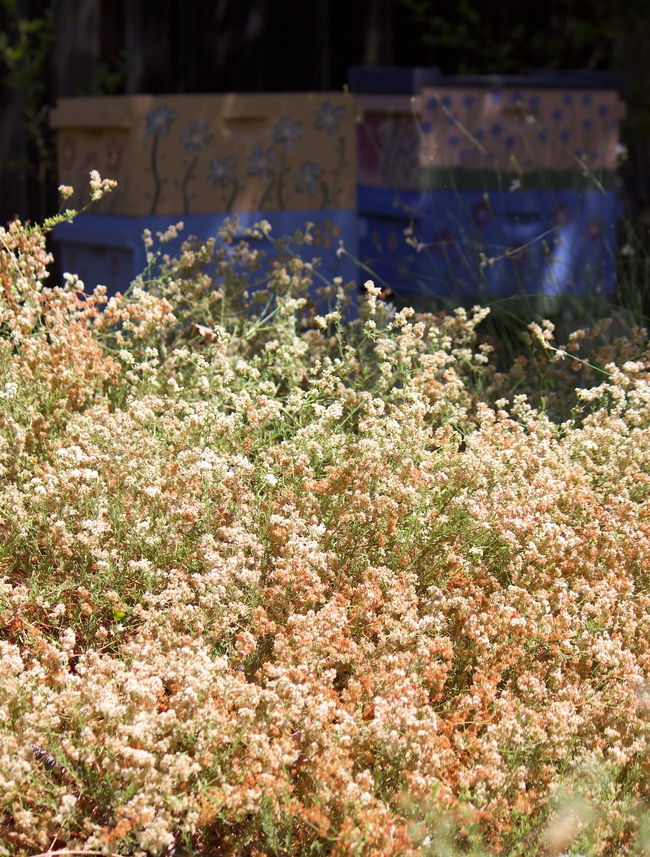
The flowers age from white to rust in later summer and provide fall color in the garden into winter.
Finally, for intense late summer color, nothing beats California fuchsia, Epilobium canum. There are numerous cultivars available, but my favorite is ‘Catalina', which reaches about 3 feet tall including flowers. California fuchsia will grow in sun or shade but blooms best in full sun. As with the aster, this plant spreads over time, making it a great filler in areas bounded by paths, buildings, or roads. These serve as barriers to keep it contained, while the plant can take the hot conditions often found in these spots.
Plant all three this fall for a show next summer!
- Author: Christine Casey
While California has moved back into drought, the heavy rain we experienced in December has brought on a bumper crop of weeds. The first reaction of many gardeners is to remove them, but I'm asking you to reconsider this to help the bees.
There are common weeds in the Central Valley that provide important nutrients for bees. If possible, leave some weeds behind, especially early in the year when nutrient needs are high and forage may be limited.
Here are a few blooming now to keep in your garden. These will die back once summer heat arrives, so if you're in a fire zone be prepared to remove the dried vegetation once plants are finished flowering.
Wild onion
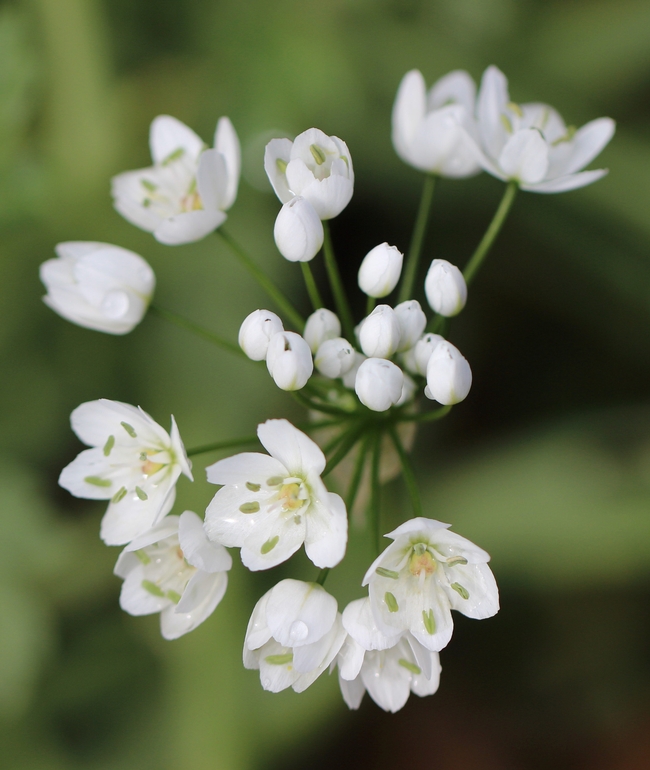
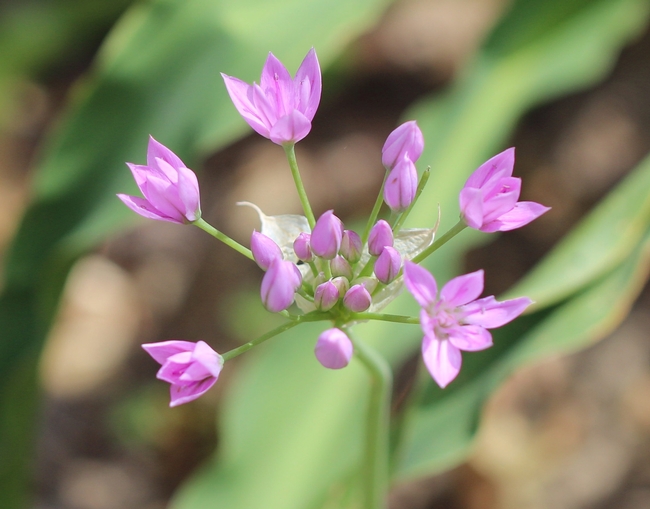
Allium triquetrum is native to Eurasia and has naturalized in many Mediterranean climates, including ours. California native Allium unifolium will spread quickly to form patches in the garden; both are well-used by bees. To learn more about onions in California, check out this article in Pacific Horticulture.
Mustard
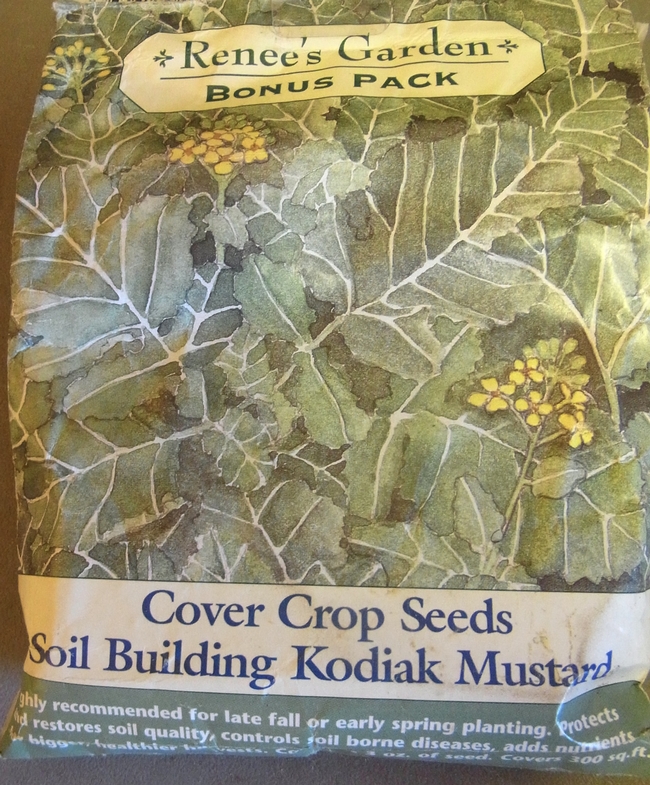
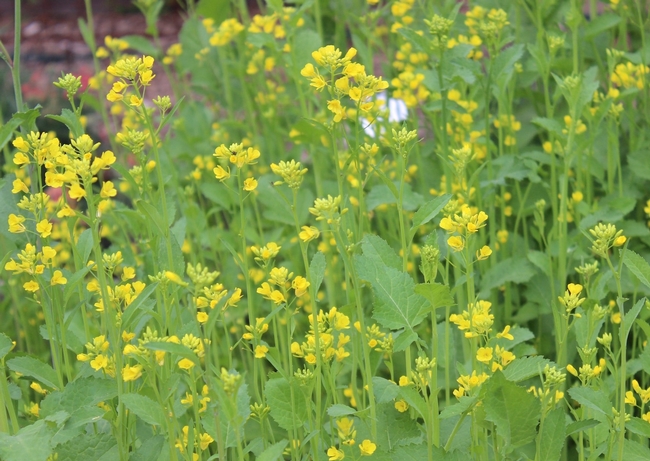
Those bright yellow fields seen in early spring are often a non-native naturalized mustard. In wild areas this can pose a fire risk as it dries down with summer heat. Mustards, however, have a high-protein pollen that's great for bees. Fortunately many are sold as cover crop seeds that can be managed in the garden. This is one that we grow annually in the Haven -- it goes straight to the compost pile once it's finished blooming, providing nutrients for next year's flowers.
Oxalis
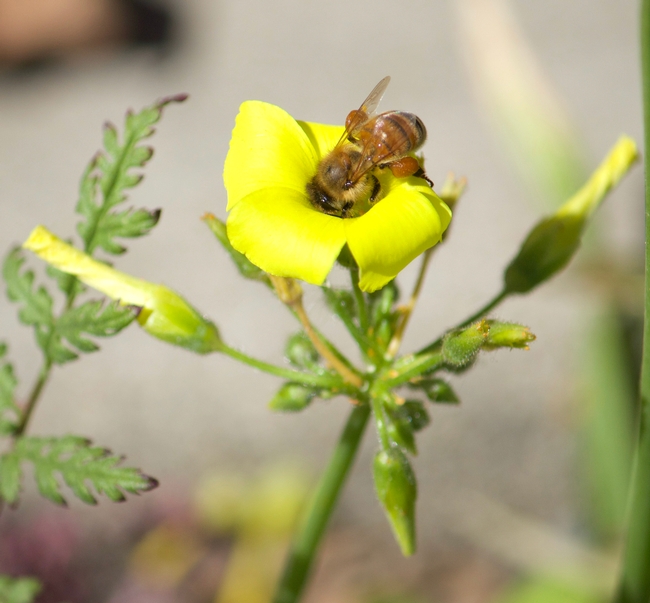
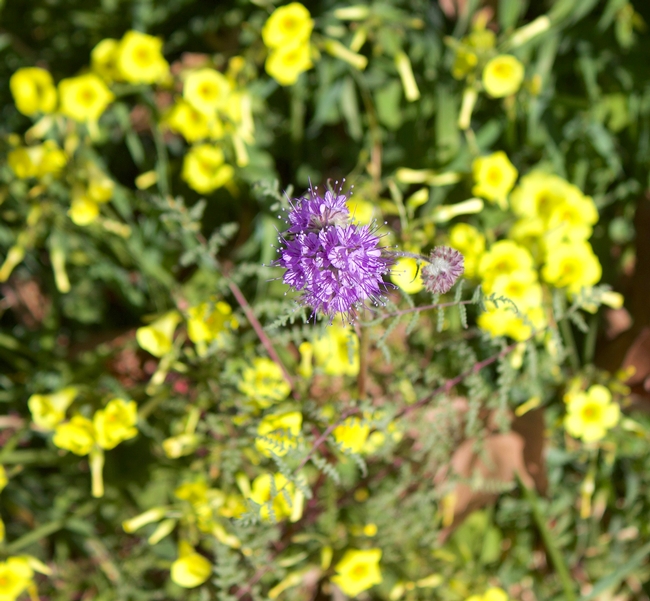
This is Bermuda buttercup, Oxalis pes-caprae. Native to South Africa, it's naturalized in Mediterranean climates worldwide. It spreads by bulb division and is difficult to control.
We don't have his weed at the Haven, but it's in my home garden. I pull much of it, but keep some for the bees. To limit spread, I only allow it to grow in the planting strip between the sidewalk and street. It provides both nectar and pollen, and also contains oxalic acid, a chemical sold commercially for varroa mite control in honey bee hives. Every few years I spread some native wildflower seeds in this spot; the highly bee-attractive Phacelia tanacetifolia has established here. California poppies and native lupines are getting ready to flower as well.
While oxalic acid has been documented to occur in leaves and stems — albeit at concentrations far lower than commercial control products — it's not been looked for in pollen or nectar. Great project for a future scientist!
- Author: Christine Casey
Bee gardeners are good stewards of the environment, which includes making the most of our precious water supplies in the garden. But are you getting the most Bees Per Gallon? We've recently completed a five-year study to evaluate the bee-attractiveness of common northern California landscape plants. Funded by the USDA-NIFA-SCRI, this work was part of a US-wide project to investigate how the horticulture industry can support bees. At UC Davis, we evaluated low- and medium-water plants that do well in northern California.
While all the plants we tested were bee-attractive to varying degrees, here are the ten most-attractive plants with WUCOLS ratings of L or VL in the Central Valley region. These are the plants that will help your garden support the most bees with the least water -- the most Bees Per Gallon!
This list is not intended to be a comprehensive recommendation. There are other great low-water bee plants (here's a list on the Haven's website); the most detailed recommendation for California bee plants of all water needs is in California Bees and Blooms by Heyday Press.
Yarrow (Achillea millefolium 'Moonshine' and 'Island Pink')
Full sun
WUCOLS rating for the Central Valley = L
Blooms summer and fall
Grows approximately 2ft h x 2ft w
Sunset zones 1-24
Cape balsam (Bulbine frutescens)
Full sun
WUCOLS rating for the Central Valley = L
Blooms nearly year-round
Grows approximately 2ft h x 3ft w
Sunset zones 8, 9, 12-24
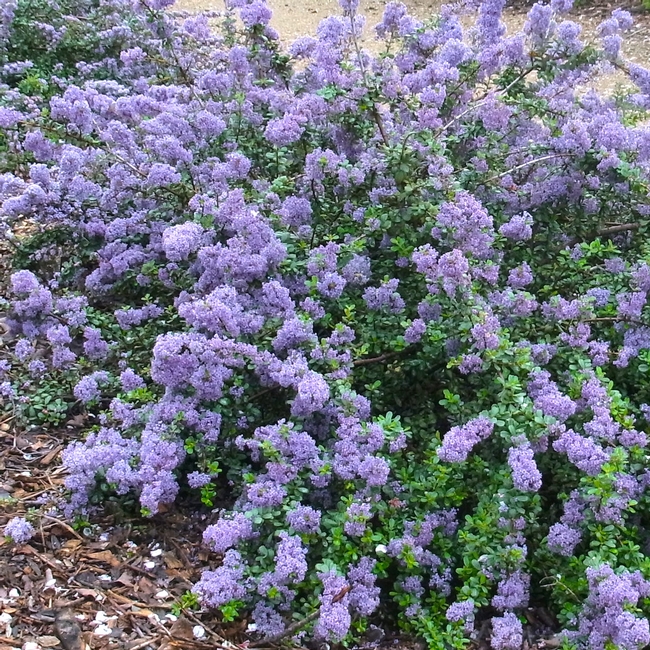
Full sun
WUCOLS rating for the Central Valley = L
Blooms late winter
Grows approximately 1ft h x 4ft w
Sunset zones 5-9,14-24
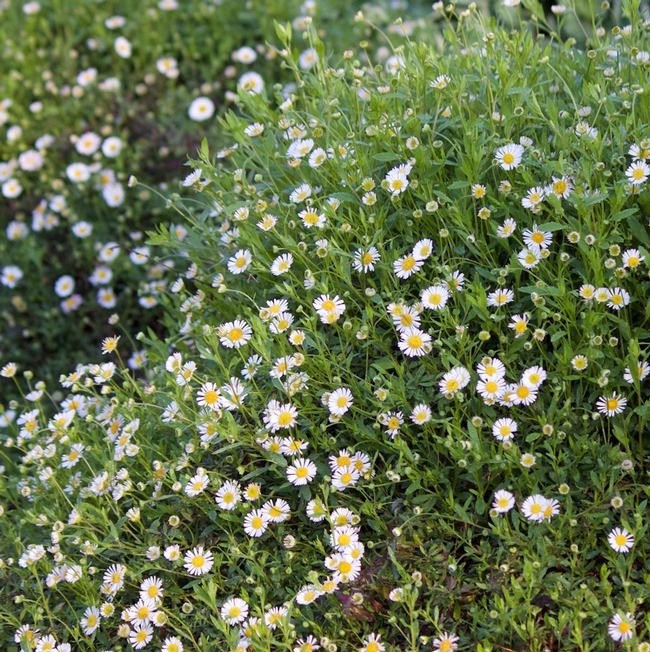
Full sun
WUCOLS rating for the Central Valley = L
Blooms nearly year-round
Grows approximately 3ft h x 3ft w
Sunset zones 8, 9, 12-24
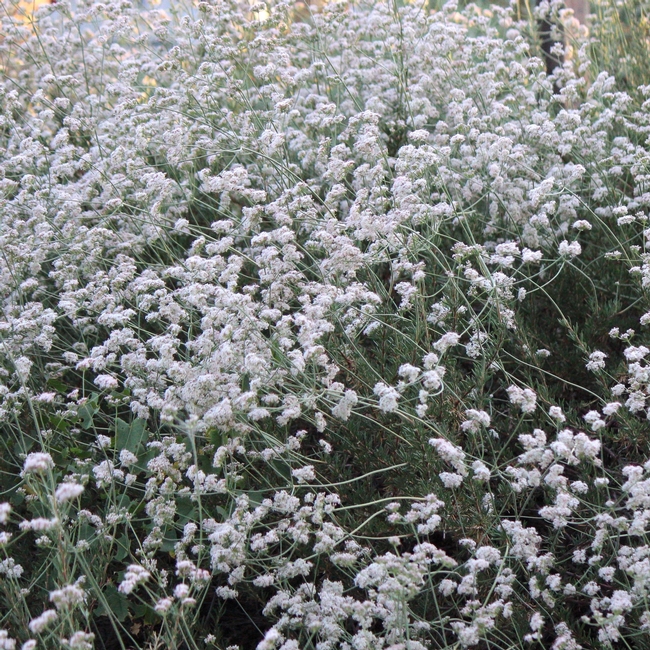
Full sun
WUCOLS rating for the Central Valley = VL
Blooms summer and fall
Grows approximately 3ft h x 3ft w
Sunset zones 7, 9, 12-24
Full sun
WUCOLS rating for the Central Valley = L
Blooms summer
Grows approximately 2ft h x 2ft w
Sunset zones 2B-24
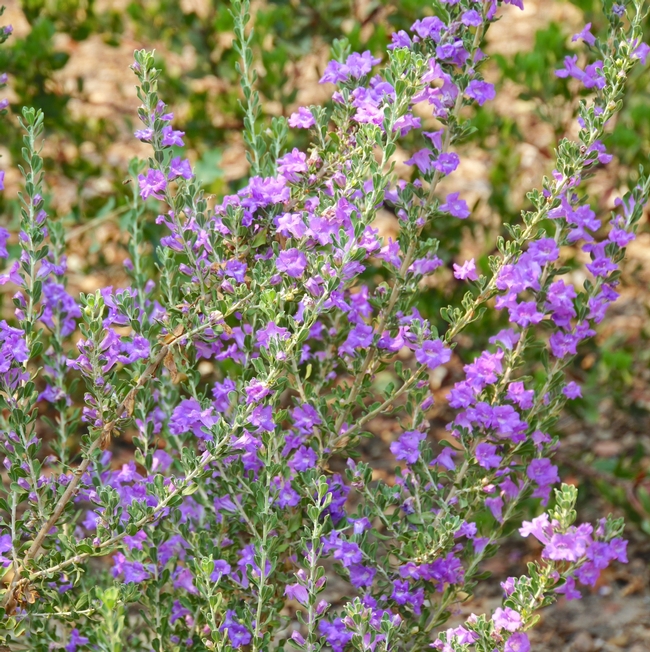
Full sun
WUCOLS rating for the Central Valley = L
Blooms late summer
Grows approximately 4ft h x 4ft w to 8ft h x 8ft w depending on variety
Sunset zones 7-24
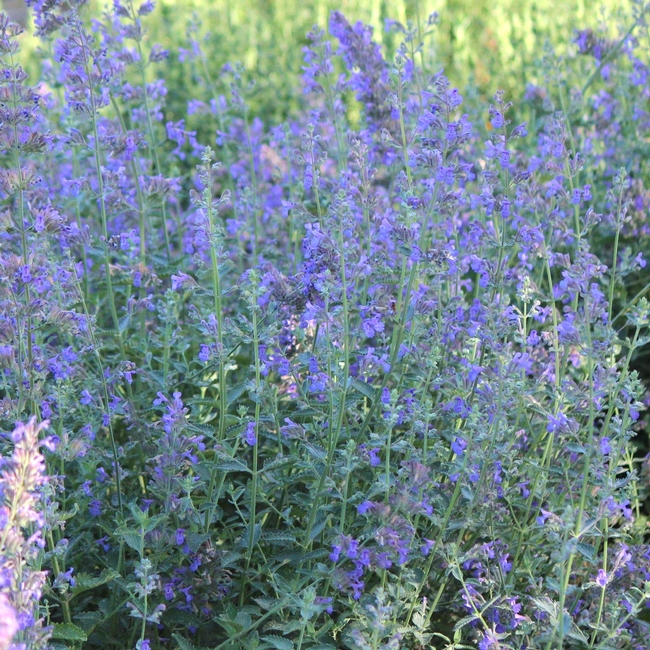
Full sun
WUCOLS rating for the Central Valley = L
Blooms summer and fall
Grows approximately 2ft h x 2ft w
Sunset zones 1-24
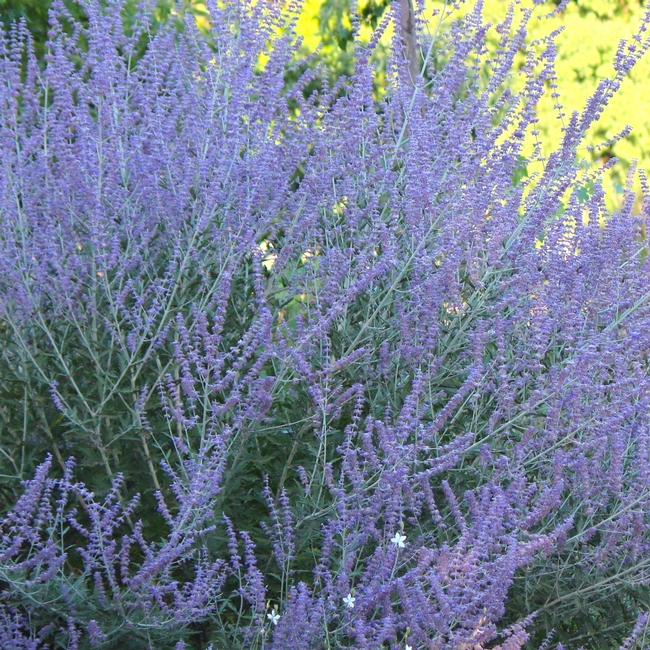
Full sun
WUCOLS rating for the Central Valley = L
Blooms summer and fall
Grows approximately 2ft h x 2ft w to 6ft h x 6ft w depending on variety
Sunset zones 2-24
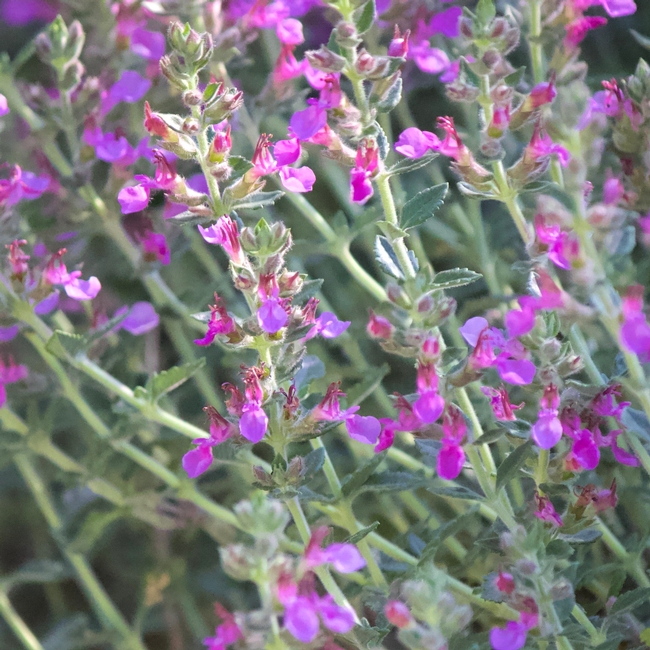
Full sun
WUCOLS rating for the Central Valley = L
Blooms summer
Grows approximately 1ft h x 2ft w
Sunset zones 2-24


